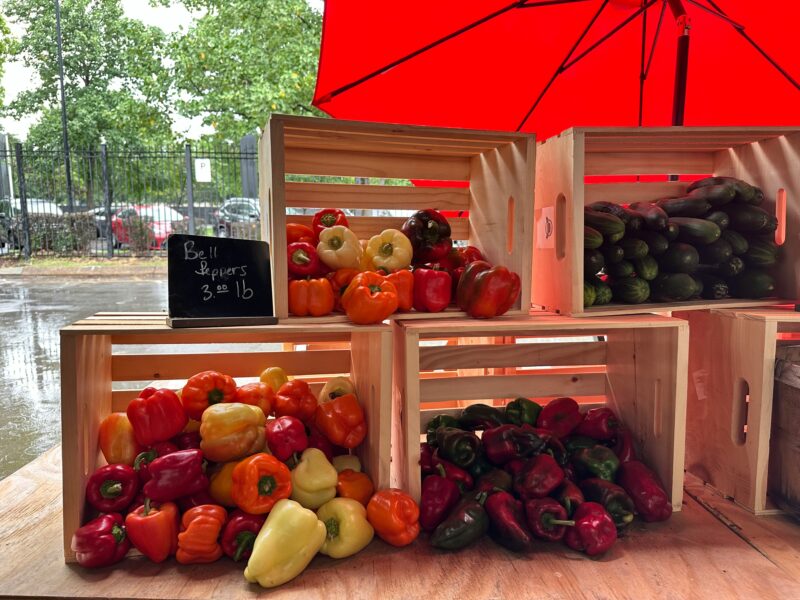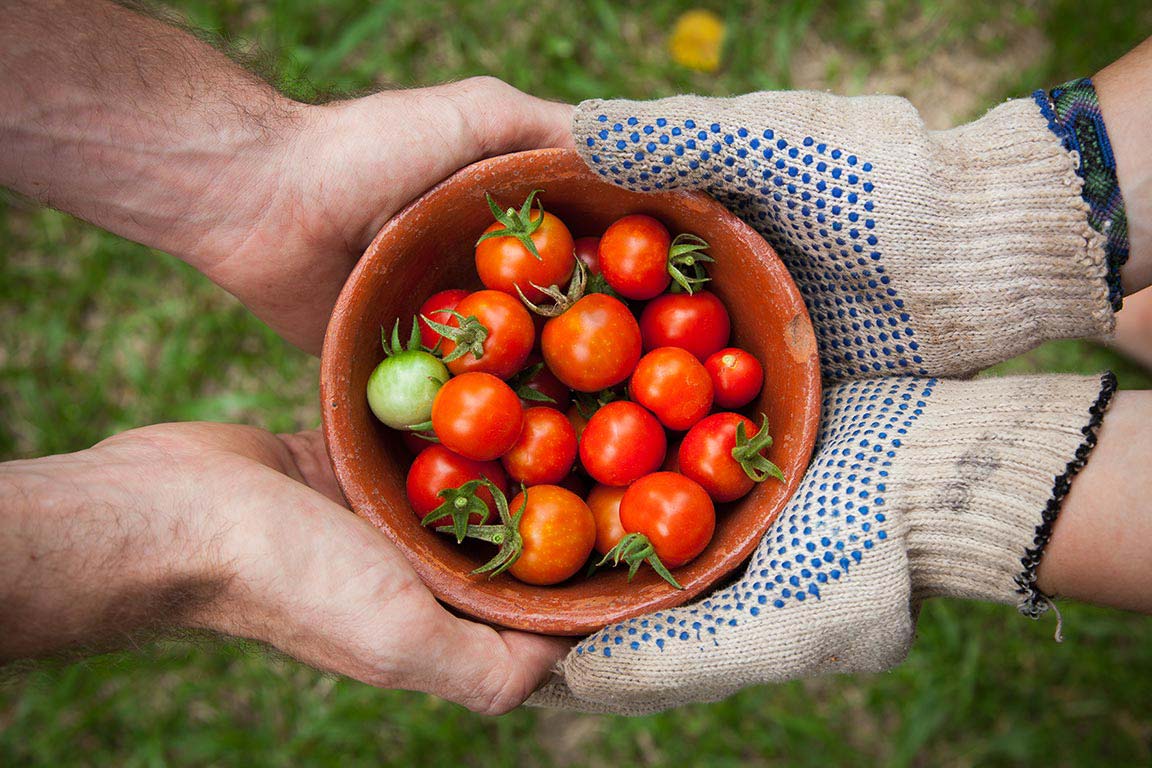Only Organic is committed to elevating the conversation on food production and climate-friendly solutions. Here are the most common questions we hear, with answers and source links to provide a healthy dialogue. Let’s encourage these discussions to bring new awareness about healthy solutions.
- What’s really at risk with climate change?
The most likely outcomes of a changing climate include “increases in the frequency and intensity of hot extremes, marine heatwaves, and heavy precipitation, agricultural and ecological droughts in some regions, and proportion of intense tropical cyclones,” according to the IPCC summary for policymakers, as well as “more severe floods and droughts.”
Climate change will have an enormous impact on every area of our lives. It “can affect our health, ability to grow food, housing, safety, and work,” according to this United Nations on Climate Action report.
“Some of us are already more vulnerable to climate impacts, such as people living in small island nations and other developing countries,” the report continues. “Conditions like sea-level rise and saltwater intrusion have advanced to the point where whole communities have had to relocate, and protracted droughts are putting people at risk of famine. In the future, the number of ‘climate refugees’ is expected to rise.”
- Does it really make a difference if I eat differently? I’m only one person!
Yes. There are simple steps that consumers can take to make better choices at the grocery store that will impact their environmental footprint. According to an EWG report, “If you eat one less burger a week, it’s like taking your car off the road for 320 miles or line-drying your clothes half the time.” Typically, animal production takes a lot more hours and resources, such as oil, water, and man hours, to produce than many other crops, like most fruit and vegetable crops, leading to a heavier environmental footprint. In turn, growing organic food crops leads to more carbon sequestration, which leads to less impact on the environment.
National Academies has reported that the science is clear that human activities need to change. “Scientists know that the warming climate is caused by human activities because:
- They understand how heat-trapping gases like carbon dioxide work in the atmosphere.
- They know why those gases are increasing in the atmosphere.
- They have ruled out other possible explanations.
- Human activities have increased the abundance of heat-trapping gases in the atmosphere.”
To better explain this increase the report found “it is mostly due to burning fossil fuels, such as coal, oil, and natural gas. Carbon dioxide has increased from a pre-industrial level of 280 parts per million to more than 410 parts per million Most of the increase in carbon dioxide in the atmosphere has occurred since the late 1950s. In Earth’s distant past, it would take between 5,000 to 20,000 years to see the amount of change in carbon dioxide levels that humans have caused in just the last 60 years.”
- How do we assess the carbon footprint of our food choices?
Several factors affect the carbon footprint of the food we choose. They include:
- Climate change
- Water and air pollution
- Destruction of natural habitat
- Increasing dead zones in world oceans
- Loss of species
- Degradation of land
- Do I have to stop eating animal products?
According to a fact sheet from the University of Michigan’s Center for Sustainable Systems, “meat production causes far higher emissions and has a much deeper carbon footprint compared to grains or vegetables, because of inefficient practices relating to plant/animal energy conversion.” The University of Michigan’s research outlines solutions such as eating fewer animal products, reducing waste, and being conservative in your consumption.
For example, if a U.S. family of four “skips meat and cheese one day a week, it’s like taking your car off the road for five weeks – or reducing everyone’s daily showers by 3 minutes” according to EWG’s report.
When consuming animal products of any kind, choose certified organic meats and wild-caught seafood whenever possible. By choosing organic, you are supporting fewer energy-intensive inputs and degradation practices carried out on our soil, air, and waterways. This helps to conserve soil, reduce erosion and water pollution, increase carbon sequestration, and preserve biodiversity and wildlife, according to this research. “Organic methods also enhance pest and weed resistance without the use of chemicals and ultimately foster greater resiliency in the face of extreme weather and climate change.”
- Can we really reverse climate change with our everyday activities?
The short answer is: Yes!
People commonly worry that individuals can do very little about climate change. But that’s far from the truth. Switching to an organic diet can have major effects on reducing climate change. There are many other ways, too, that going organic can reduce the impact of climate change.
This report shares “unequivocal” evidence that, as most scientists have argued for years, human activities are the biggest driver of our warming atmosphere. Small changes in our behavior may affect our climate enormously.
A white paper from the Rodale Institute estimates that if all crops and pastureland across the world were converted to regenerative organic agriculture it could sequester over 100 percent of our annual carbon dioxide emissions, virtually zeroing out the world’s yearly carbon dioxide emissions.
- Now that I know what to STOP eating, tell me, what CAN I eat?
Choosing certified organic and local are the most important factors to consider when choosing climate-friendly food. The Soil Association says 23% of European Union greenhouse gas emissions could be cut if half of all EU farming converted to organic agriculture by 2030.
And the more miles that food travels, the bigger the carbon footprint. The average fruit or vegetable travels 1,500 to 2,500 miles. Choose local, organic food from a community farmer and you’re creating a healthy local food economy that also supports food security when supply chains fail.
Certain crops require fewer resources than others. Studies have shown an environmental footprint for specific crops based on their carbon need. Here is a breakdown per kilogram, or kg, for some common crops.
- Broccoli – 2 kg carbon per kilogram of broccoli consumed
- Lentils – 0.9 kg carbon per kilogram of lentils consumed
- Tomatoes – 1.1 kg carbon per kilogram of tomatoes consumed
- Dry beans – 2 kg carbon per kilogram of dry beans consumed
- Tofu – 2 kg carbon per kilogram of tofu consumed
- Nuts – 2.3 kg carbon per kilogram of nuts consumed
- Rice – 2.7 kg carbon per kilogram of rice consumed
- Potatoes – 2.9 kg carbon per kilogram of potatoes consumed
Many other fruits and veggies benefit our planet. For instance, green peas naturally fix nitrogen in the soil, lowering the need for fertilizers and helping maintain the soil’s nutrients. According to an article in the Guardian, “The grain amaranth is known for being especially resilient in difficult climates. As a complete protein with all nine essential amino acids, amaranth is a highly nutritious source of manganese, magnesium, phosphorus, iron, and antioxidants that may improve brain function and reduce inflammation.” Because of its resiliency, high levels of nutrients and antioxidants, cost efficiency, and need for less resources, grain amaranth could help in feeding a more populated world that is experiencing an increase in weather extremes and depleting natural resources.
And some crops, such as citrus crops, require fewer resources. In a study done in Sicily, Italy, analyzing the sustainability of organic versus conventional orange and lemon orchards, it was found that organic farming showed higher sustainability and that systems were more sustainable because of the lack of chemicals used. The results “ prove the stronger sustainability of the organic over the conventional system, both in terms of energy consumption and environmental impact, especially for lemons.”
- Are there any other climate-friendly actions consumers can take?
YES. It requires a commitment to reducing your food waste. “EWG’s analysis found that discarded food accounts for at least 20 percent on average of the emissions associated with producing, processing, transporting and consuming meat and dairy products.” Reducing waste and buying only as much as you can eat is the easiest way to reduce greenhouse gas and other environmental impacts of food. Learn more about reducing waste in this blog.
Every decision you make, from the grocery store to your restaurant order, affects your health and the health of our planet. When you sit down to eat, remember: Every bite counts!









